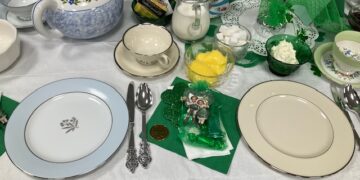
The June full moon is called the Strawberry Moon and the pick-your-own patches explain why. June is officially strawberry season. Whether you enjoy a fresh pint from a farmer’s market, pick some on a farm, or grow your own in your garden, this gorgeous fruit is everywhere. Local restaurants feature strawberry dishes as specials, and its prime time for jams and jellies as well.
Strawberries are members of the rose family, and the most common variety is a hybrid of a Chilean variety and wild Virginia berries. Strawberries are native to North America, among other places, but were only cultivated somewhat recently. They were in such abundance native populations were able to forage them easily without needing to reign them in.
Cultures all over the world have been utilizing strawberries for food and medicine for centuries. They were cultivated in France as early as 1300 CE. In Asia, strawberries have been used as far back as 2600 BC! At that time there was documentation that the emperor had used strawberry leaves in tea to help with longevity! Romans were known to use strawberries to help with bad breath, and also assist with digestive complaints. Multiple cultures associated strawberries with fertility as they are bright red and prolific.
If you wish to cultivate your own, here are a few tips I have found. Be aware that strawberries are runners! Plant them at least 18 inches apart with 4 feet in between rows. They will spread, as I have noticed in our small little patch. Keep the beds mulched and well-watered as the shallow roots require a lot of moisture to stay healthy. Ample weeding is also important to keep unwanted plants from smothering out the low-growing strawberry plants. If all goes well, you should be seeing beautiful berries 4-6 weeks after planting! Harvest only the ripest red berries that are easy to pull from the plant. Unwashed berries can be stored for 3-5 days in the refrigerator, while frozen berries can last up to 2 months. Frozen berries can be thawed for baking, smoothies, or to enjoy as a topping on yogurt or ice cream.
Because our winters are relatively mild, most strawberry plants will survive the colder months. Extra mulch will insulate the plants through any frost or ice, and the moisture from winter weather will keep the roots healthy. Once spring rolls around, take off some of the old mulch and replace it with a lighter layer and you’re ready to go.
Most folks are familiar with the sweet and delightful taste strawberries have when you bite into them, and they are often used in desserts from strawberry shortcake to strawberry ice cream and many other delicious delicacies in between. They are delicious raw in salads and sangria and have even been made into salsa! However you enjoy your strawberries this summer, may they be large and full of juicy delights!
































